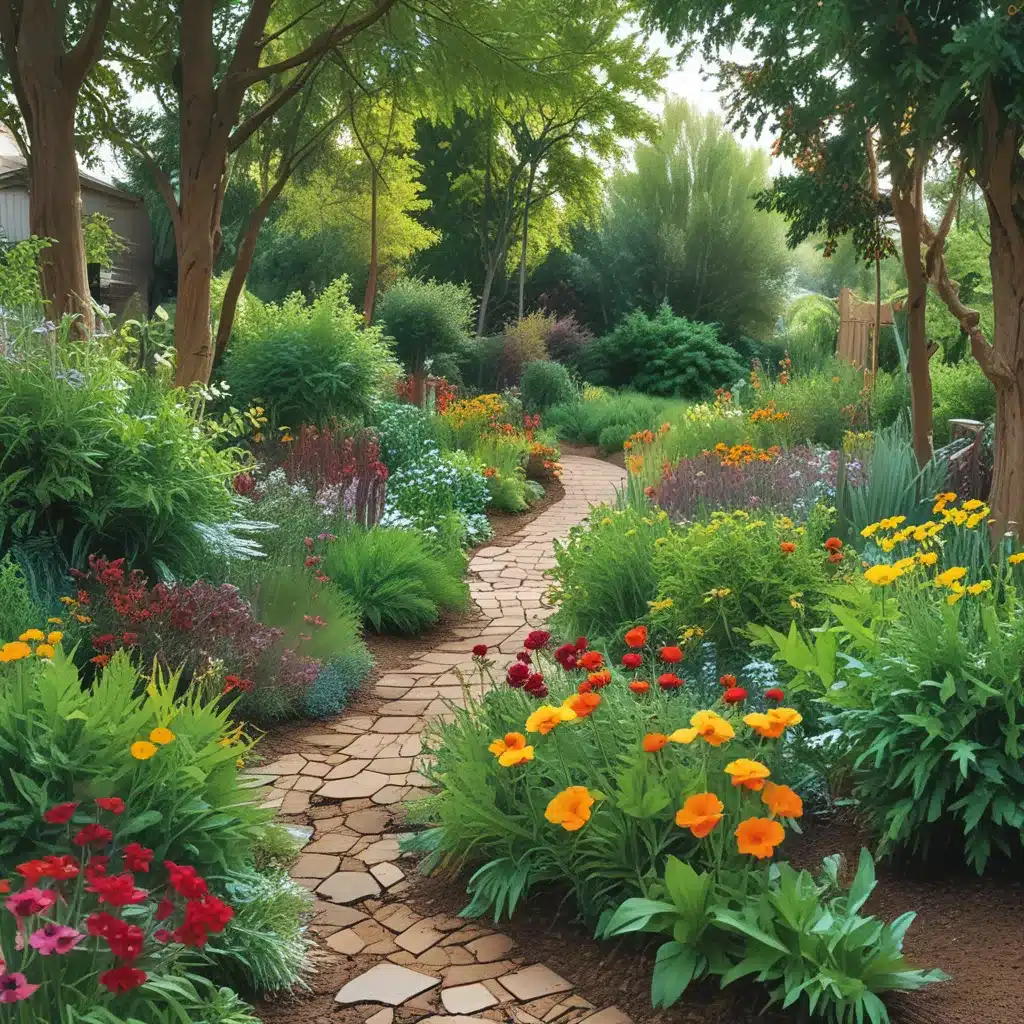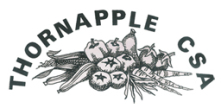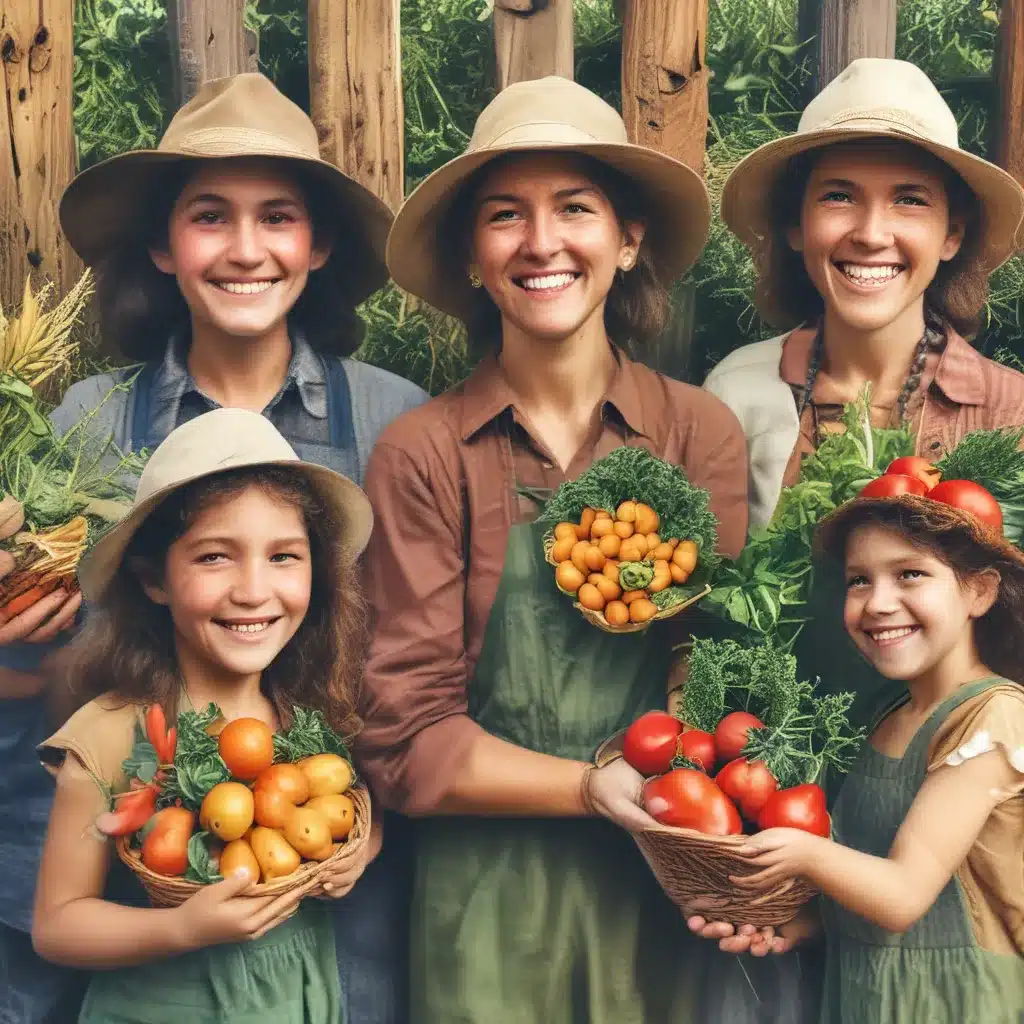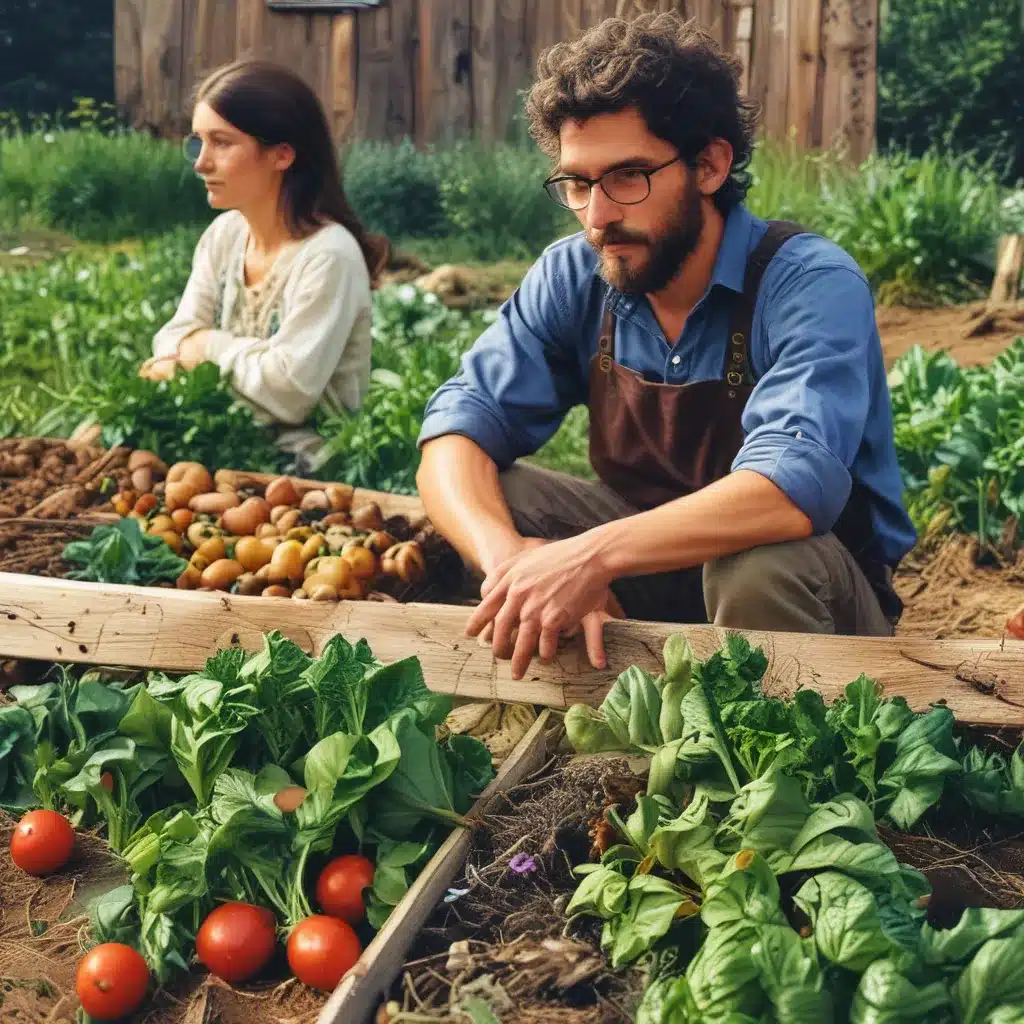
A Yard Reborn: From Barren to Bountiful
Picture this: a lush, verdant oasis teeming with vibrant colors and tantalizing aromas, all within the confines of your own backyard. Sound like a fairytale? Well, my friends, let me introduce you to the incredible world of edible landscaping – a transformative approach that can turn your humble plot of land into a veritable cornucopia of deliciousness.
As someone who has embraced this lifestyle, I can attest to the pure joy and fulfillment it brings. It all started when I stumbled upon the work of Cory Suter, a fourth-generation gardener who has transformed his home in Fairfax County, Virginia, into a true Suter’s Glen Permaculture Farm. Cory’s passion for working in harmony with nature has not only nourished his family but also fostered a deeper connection with the land.
Embracing the Edible
What I love most about Cory’s approach is his unwavering belief that “the more we learn how to work with nature instead of trying to dominate nature, the happier and healthier both will be.” This philosophy is the foundation of edible landscaping, and it’s a mindset that I’ve wholeheartedly embraced in my own backyard transformation.
You see, the traditional manicured lawn and ornamental gardens of yesteryear are giving way to a new wave of food-producing oases. By strategically incorporating edible plants into our landscaping, we can not only beautify our outdoor spaces but also reap the rewards of a bountiful harvest.
From Lawn to Lush Edible Haven
Gone are the days of monotonous grass and thirsty flower beds. Instead, imagine a vibrant tapestry of herbs, vegetables, and even fruit trees, all seamlessly woven into a visually stunning landscape. It’s a feast for the senses, with the added bonus of providing you and your family with a steady supply of fresh, nutrient-dense produce.
Take, for example, the plants for edible landscaping recommended by the Fairfax Food Council. From the bold and architectural artichoke to the fragrant lemon verbena, these plants not only look stunning but also offer a diverse array of culinary possibilities.
And let’s not forget about the edible flowers! Imagine the delight of adorning your summer salads with the sunny hues of yellow seladon or the peppery notes of nasturtium petals. These vibrant blooms not only add visual interest but also contribute to the overall nutritional value of your homegrown bounty.
Embracing the Small-Scale
Perhaps you’re thinking, “But I don’t have acres of land to work with. How can I possibly create an edible oasis?” Fear not, my friends, as edible landscaping is not limited to sprawling estates. In fact, some of the most impressive transformations have occurred in modest urban and suburban settings.
Urban agriculture techniques, such as raised garden beds and vertical gardening, have allowed even the most space-constrained homeowners to reap the benefits of a thriving edible landscape. Think juicy tomatoes cascading from a hanging planter, fragrant herbs lining a windowsill, or a bountiful crop of microgreens flourishing in a compact indoor setup.
Nurturing the Cycle of Life
As I delve deeper into the world of edible landscaping, I’m continually amazed by the profound interconnectedness of it all. It’s not just about growing food – it’s about cultivating a self-sustaining ecosystem that nourishes both the land and its inhabitants.
Take, for example, the role of mushrooms in this delicate balance. Cory Suter has incorporated the incredible Hen of the Woods and Morel mushrooms into his permaculture farm, harnessing their ability to break down organic matter and enrich the soil. By embracing the diversity of life in our gardens, we can create a harmonious cycle where every element plays a vital role.
Finding Inspiration and Resources
If you’re feeling inspired to transform your own yard into an edible oasis, you’re in luck. There’s a wealth of resources and knowledge readily available to guide you on your journey.
One invaluable source is Edible Landscaping, a company that has been at the forefront of this movement for over 40 years. Their comprehensive website and educational resources can help you navigate the world of edible plants, design principles, and practical implementation.
Another gem is the Fairfax Food Council, which has been instrumental in promoting urban agriculture and edible landscaping in the local community. Their workshops and resources, such as the Edible Landscaping Plants Workshop, can provide you with invaluable guidance on plant selection, design, and cultivation.
And if you’re a visual learner, the documentary “Kiss the Ground” is a must-watch. This powerful film explores the transformative potential of regenerative agriculture, including the role of edible landscapes in mitigating climate change and restoring the health of our planet. You can find it on their website or pick up the accompanying book, “Kiss the Ground,” for a deeper dive into the subject.
A Bountiful Future Awaits
As I reflect on my own journey of transforming my backyard into an edible oasis, I’m struck by the profound sense of fulfillment and connection it has brought. Gone are the days of a monotonous lawn and thirsty ornamentals – in their place, a vibrant tapestry of life, nourishing both my family and the local ecosystem.
The path to creating your own edible landscape may seem daunting at first, but with a little bit of knowledge, creativity, and a willingness to work in harmony with nature, the possibilities are truly endless. So, my friends, why not take the first step and begin your own Thornapple CSA journey? The bountiful oasis of your dreams is closer than you might think.



